Themed collection 2017 Journal of Materials Chemistry A HOT Papers

Understanding inks for porous-electrode formation
Scalable manufacturing of high-aspect-ratio multi-material electrodes are important for advanced energy storage and conversion systems. There is a need to understand how one goes from a colloidal state through processing to a functional porous electrode. Such knowledge enables ink-engineering for electrode performance and durability optimization.

J. Mater. Chem. A, 2017,5, 20527-20533
https://doi.org/10.1039/C7TA07255D
Recent advances and insights in dye-sensitized NiO photocathodes for photovoltaic devices
Approaches to enhance the performance of recent sensitizers employed in dye-sensitized NiO photocathodes for DSC and DSPEC devices are described.

J. Mater. Chem. A, 2017,5, 21077-21113
https://doi.org/10.1039/C7TA06500K
Multiscale-architectured functional membranes utilizing inverse opal structures
Inverse-opal structured isoporous membranes can exhibit outstanding separation properties of high selectivity and high permeability.

J. Mater. Chem. A, 2017,5, 17111-17134
https://doi.org/10.1039/C7TA05033J
Alternative strategies in improving the photocatalytic and photoelectrochemical activities of visible light-driven BiVO4: a review
This review summarises the recent advances of various strategies in improving the performances of BiVO4 in photocatalytic and photoelectrochemical systems.

J. Mater. Chem. A, 2017,5, 16498-16521
https://doi.org/10.1039/C7TA04441K
Cellulose nanofibril nanopapers and bioinspired nanocomposites: a review to understand the mechanical property space
This review discusses the correlation between structure formation, nanostructural details and mechanical properties in biobased high performance materials formed from renewable cellulose nanofibrils.
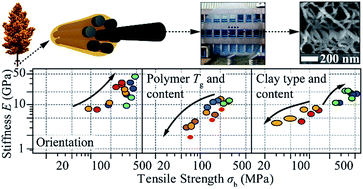
J. Mater. Chem. A, 2017,5, 16003-16024
https://doi.org/10.1039/C7TA02006F
Mixed cation hybrid lead halide perovskites with enhanced performance and stability
The mixed cation lead halide perovskite solar cells exhibited improved performance and enhanced stabilities.

J. Mater. Chem. A, 2017,5, 11450-11461
https://doi.org/10.1039/C7TA00042A
Low-toxic metal halide perovskites: opportunities and future challenges
Over the past few years, lead halide perovskites have emerged as a class of dominant semiconductor materials in the photovoltaic (PV) field with an unprecedented sharp enhancement of power conversion efficiencies (PCEs) up to 22.1%, as well as in other promising optoelectronic applications due to their extraordinary and unique properties.

J. Mater. Chem. A, 2017,5, 11436-11449
https://doi.org/10.1039/C7TA00269F
Transition metal oxides with one-dimensional/one-dimensional-analogue nanostructures for advanced supercapacitors
Controlled synthesis for electrode materials and excellent electrochemical performances were introduced for advanced supercapacitors.

J. Mater. Chem. A, 2017,5, 8155-8186
https://doi.org/10.1039/C7TA02454A
Recent progress in layered metal dichalcogenide nanostructures as electrodes for high-performance sodium-ion batteries
The sodium storage performance of layered metal dichalcogenide anodes enhanced through nanostructure engineering, crystal structure modulation, doping/alloying and composite design is systematically reviewed.
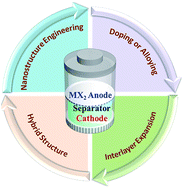
J. Mater. Chem. A, 2017,5, 7667-7690
https://doi.org/10.1039/C7TA00003K
Perspectives on water-facilitated CO2 capture materials
This review firstly proposes the concept of water-facilitated CO2 capture materials. The strategies of avoiding the negative effects of water and maximizing the positive effects of water are tentatively proposed.
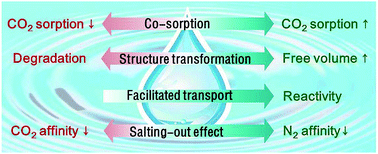
J. Mater. Chem. A, 2017,5, 6794-6816
https://doi.org/10.1039/C7TA01297G
Recent innovative configurations in high-energy lithium–sulfur batteries
In this review, the recent developments of novel configurations for Li–S batteries, including hierarchical gradient cathodes, modified separators, solid-state electrolytes and lithium anode protection, are presented.

J. Mater. Chem. A, 2017,5, 5222-5234
https://doi.org/10.1039/C7TA00290D
Nanostructured cathode materials for lithium–sulfur batteries: progress, challenges and perspectives
This review article summarises the progress, challenges and prospects of nanostructured cathode materials for lithium–sulfur batteries.
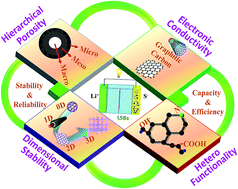
J. Mater. Chem. A, 2017,5, 3014-3038
https://doi.org/10.1039/C6TA10111A
Configuration-centered photovoltaic applications of metal halide perovskites
Metal halide perovskites, particularly lead halide perovskites, have seen extraordinary breakthroughs in photovoltaics with power conversion efficiency swiftly surging to over 22% in the past few years, demonstrating their huge potential for rivalry with crystalline silicon solar cells in terms of production cost and performance for the future photovoltaic market.

J. Mater. Chem. A, 2017,5, 902-909
https://doi.org/10.1039/C6TA07976H
Discovery of a novel, large pore phase in a bimetallic Al/V metal–organic framework
A new series of bimetallic COMOC-2(V)/DUT-5(Al) frameworks are developed and fully characterized.
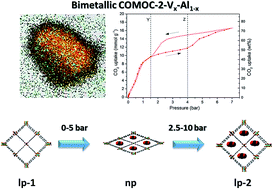
J. Mater. Chem. A, 2017,5, 24580-24584
https://doi.org/10.1039/C7TA08103K
A lithium–carbon nanotube composite for stable lithium anodes
Li metal has been considered as the ultimate anode material for high-density electrochemical energy storage technology because of its extremely high specific capacity (3860 mAh g−1), lowest redox potential, and ability to enable battery chemistries with lithium free cathode materials.
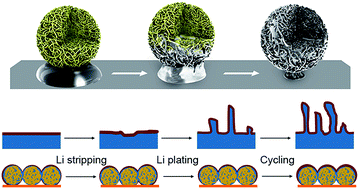
J. Mater. Chem. A, 2017,5, 23434-23439
https://doi.org/10.1039/C7TA08531A
Covalent organic frameworks as metal-free heterogeneous photocatalysts for organic transformations
A robust two-dimensional covalent organic framework (COF-JLU5), which exhibits excellent heterogeneous photocatalytic performances for oxidative C–H functionalizations under visible-light irradiation using O2 as a green oxygen source, is reported.

J. Mater. Chem. A, 2017,5, 22933-22938
https://doi.org/10.1039/C7TA07691F
A high tenacity electrode by assembly of a soft sorbent and a hard skeleton for lithium–sulfur batteries
The volume expansion of a sulfur cathode can be accommodated by fabricating a composite structure with a soft sorbent (graphene) and a hard skeleton (SiC) material in lithium sulfur batteries.

J. Mater. Chem. A, 2017,5, 22459-22464
https://doi.org/10.1039/C7TA07063B
Optimisation of oxide-ion conductivity in acceptor-doped Na0.5Bi0.5TiO3 perovskite: approaching the limit?
σ b of NBT is optimised by acceptor-doping, which is restrained by oxygen-vacancy diffusivity limit in perovskites.

J. Mater. Chem. A, 2017,5, 21658-21662
https://doi.org/10.1039/C7TA07667C
Cobalt boride modified with N-doped carbon nanotubes as a high-performance bifunctional oxygen electrocatalyst
An excellent electrocatalyst for reversible oxygen reduction and oxygen evolution synthesized by direct growth of nitrogen-doped carbon nanotubes on cobalt boride nanoparticles.
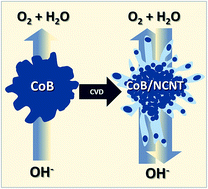
J. Mater. Chem. A, 2017,5, 21122-21129
https://doi.org/10.1039/C7TA06995B
Quantitative analysis of the PtO structure during photocatalytic water splitting by operando XAFS
Operando XAFS provides quantitative evidence of structural distortions of platinum oxide as an active site during photocatalytic water splitting.

J. Mater. Chem. A, 2017,5, 20631-20634
https://doi.org/10.1039/C7TA07440A
Fine-tuning of the confined space in microporous metal–organic frameworks for efficient mercury removal
We report a novel metal–organic framework showing a very efficient, selective and fast Hg2+ removal.
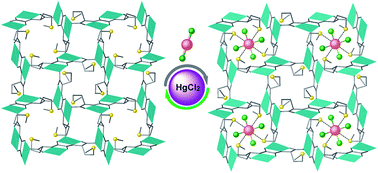
J. Mater. Chem. A, 2017,5, 20120-20125
https://doi.org/10.1039/C7TA06199D
Electrochemical reduction of aqueous nitrogen (N2) at a low overpotential on (110)-oriented Mo nanofilm
Aqueous N2 electrochemical reduction at low overpotential of 0.14 V is achieved on (110)-oriented Mo nanofilm at ambient pressure.

J. Mater. Chem. A, 2017,5, 18967-18971
https://doi.org/10.1039/C7TA06139K
Boosting the bifunctional electrocatalytic oxygen activities of CoOx nanoarrays with a porous N-doped carbon coating and their application in Zn–air batteries
A N-doped porous carbon coated cobalt oxide nanoarray electrode was prepared with excellent bifunctional oxygen catalytic performance, and demonstrated good stability and high efficiency in a Zn–air battery.

J. Mater. Chem. A, 2017,5, 17804-17810
https://doi.org/10.1039/C7TA03996D
New small-molecule acceptors based on hexacyclic naphthalene(cyclopentadithiophene) for efficient non-fullerene organic solar cells
A series of new non-fullerene small molecule acceptors (NTIC, NTIC-Me, NTIC-OMe and NTIC-F) based on the acceptor–donor–acceptor (A–D–A) architecture, using hexacyclic naphthalene-(cyclopentadithiophene) as the central unit, were designed and synthesized.
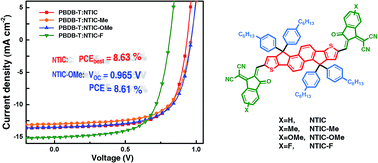
J. Mater. Chem. A, 2017,5, 17204-17210
https://doi.org/10.1039/C7TA05809H
Aromatic ring substituted g-C3N4 for enhanced photocatalytic hydrogen evolution
An all-carbon aromatic ring substitutionally doped g-C3N4 was synthesized with greatly enhanced light absorption, band structure and carrier separation, achieving a 3 times higher hydrogen evolution rate (HER).
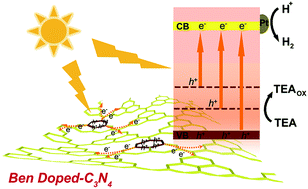
J. Mater. Chem. A, 2017,5, 17199-17203
https://doi.org/10.1039/C7TA05744J
Electrodeposited cobalt phosphide superstructures for solar-driven thermoelectrocatalytic overall water splitting
Facilitated by supplementary thermal energy converted from sustainable solar irradiance, the electrocatalytic water splitting kinetics of cobalt phosphide superstructures are considerably enhanced.

J. Mater. Chem. A, 2017,5, 16580-16584
https://doi.org/10.1039/C7TA04719C
A versatile graphene foil
Graphene foil with high electrical conductivity exhibits versatile features, as a flame-retardant material and a substitute for metal current collectors.
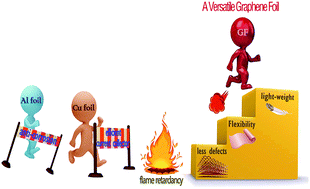
J. Mater. Chem. A, 2017,5, 14508-14513
https://doi.org/10.1039/C7TA03059B
Adjusting the electronic structure by Ni incorporation: a generalized in situ electrochemical strategy to enhance water oxidation activity of oxyhydroxides
An in situ electrochemical Ni-incorporating strategy is developed to tailor the electronic structure of β-FeOOH and the as-prepared Ni incorporated β-FeOOH exhibits a high oxygen evolution electrocatalytic performance in alkaline media.

J. Mater. Chem. A, 2017,5, 13336-13340
https://doi.org/10.1039/C7TA03582A
Advancing the n → π* electron transition of carbon nitride nanotubes for H2 photosynthesis
Carbon nitride nanotubes with enhanced optical absorption and advanced charge carrier behavior stimulate photocatalytic hydrogen production.

J. Mater. Chem. A, 2017,5, 12723-12728
https://doi.org/10.1039/C7TA03777E
A ternary conjugated D–A copolymer yields over 9.0% efficiency in organic solar cells
The best performance copolymer exhibits a power conversion efficiency of 9.08%, representing the highest value for ternary conjugated D–A copolymers.
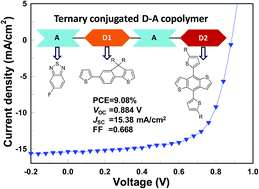
J. Mater. Chem. A, 2017,5, 12015-12021
https://doi.org/10.1039/C7TA03316H
A 2D free-standing film-inspired electrocatalyst for highly efficient hydrogen production
A high electrocatalytic performance free-standing film based on molybdenum carbide nanoribbons between N-doped graphene nanolayers was developed.
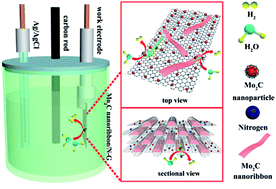
J. Mater. Chem. A, 2017,5, 12027-12033
https://doi.org/10.1039/C7TA03228E
Integration of plasmonic and amorphous effects in MoO3−x spheres for efficient photoelectrochemical water oxidation
MoO3−x spheres with plasmonic and amorphous features were obtained as highly active and stable photoanodes for water oxidation.

J. Mater. Chem. A, 2017,5, 12022-12026
https://doi.org/10.1039/C7TA03011H
Construction of light-harvesting system for enhanced catalytic performance of Pd nanoframes toward Suzuki coupling reaction
Au octahedra have been encapsulated into Pd nanoframes to further enhance the catalytic activity of Pd nanoframes toward Suzuki coupling reactions.

J. Mater. Chem. A, 2017,5, 10150-10153
https://doi.org/10.1039/C7TA01643C
Nanoscale engineering of nitrogen-doped carbon nanofiber aerogels for enhanced lithium ion storage
After carbonization of bamboo nanocellulose aerogels in ammonia gas, the obtained nitrogen-doped carbon nanofiber (N-ACNF) aerogels with a tunable nanostructure were found to be ideal candidates for high-performance anodes in LIBs.

J. Mater. Chem. A, 2017,5, 8247-8254
https://doi.org/10.1039/C7TA02334K
Continuous fabrication of the graphene-confined polypyrrole film for cycling stable supercapacitors
A meter-length graphene-confined, polypyrrole film was fabricated by scalable wet-spinning technology for cycling stable supercapacitors.

J. Mater. Chem. A, 2017,5, 8255-8260
https://doi.org/10.1039/C7TA01921A
Honeycomb-like carbon nanoflakes as a host for SnO2 nanoparticles allowing enhanced lithium storage performance
Confining smaller and fewer SnO2 nanoparticles within honeycomb-like carbon nanoflakes demonstrated superior cycle stability and rate capability for lithium storage.
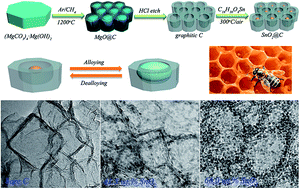
J. Mater. Chem. A, 2017,5, 6817-6824
https://doi.org/10.1039/C7TA00772H
In situ surface derivation of an Fe–Co–Bi layer on an Fe-doped Co3O4 nanoarray for efficient water oxidation electrocatalysis under near-neutral conditions
A core–shell Fe–Co3O4@Fe–Co–Bi nanoarray (Fe–Co3O4@Fe–Co–Bi/CC) acts as a superior catalyst electrode for water oxidation, with the need of an overpotential of 420 mV to drive 10 mA cm−2 in 0.1 M K-Bi.

J. Mater. Chem. A, 2017,5, 6388-6392
https://doi.org/10.1039/C7TA00740J
Carbon nitride supported AgPd alloy nanocatalysts for dehydrogenation of formic acid under visible light
We report a facile approach for the one-step room-temperature preparation of nearly monodisperse AgPd alloy nanoparticles supported on semiconductor graphitic carbon nitride (g-CN). The AgPd/g-CN nanocatalysts are highly active and durable for dehydrogenation of formic acid under visible light or dark at ambient condition.

J. Mater. Chem. A, 2017,5, 6382-6387
https://doi.org/10.1039/C7TA01039G
Transparent wood containing CsxWO3 nanoparticles for heat-shielding window applications
A type of functionalized nanoparticles filled transparent wood composite for heat-shielding-window applications.

J. Mater. Chem. A, 2017,5, 6019-6024
https://doi.org/10.1039/C7TA00261K
Controllable construction of metal–organic polyhedra in confined cavities via in situ site-induced assembly
Controllable fabrication of metal–organic polyhedra in confined cavities with improved properties was realized through in situ site-induced assembly.

J. Mater. Chem. A, 2017,5, 5278-5282
https://doi.org/10.1039/C7TA01069A
Charge transfer induced polymerization of EDOT confined between 2D titanium carbide layers
In situ polymerization of 3,4-ethylenedioxythiophene (EDOT) is achieved on the surface of 2D Ti3C2Tx MXene without using any oxidant, resulting in improved lithium ion storage capability of Ti3C2Tx/poly-EDOT hybrids.

J. Mater. Chem. A, 2017,5, 5260-5265
https://doi.org/10.1039/C7TA00149E
A soft non-porous separator and its effectiveness in stabilizing Li metal anodes cycling at 10 mA cm−2 observed in situ in a capillary cell
While lithium metal anodes have the highest theoretical capacity for rechargeable batteries, they are plagued by the growth of lithium dendrites, side reactions, and a moving contact interface with the electrolyte during cycling.
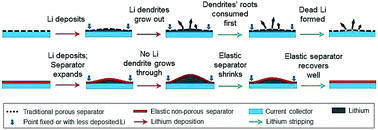
J. Mater. Chem. A, 2017,5, 4300-4307
https://doi.org/10.1039/C7TA00069C
Ni nanobelts induced enhancement of hole transport and collection for high efficiency and ambient stable mesoscopic perovskite solar cells
Free standing Ni nanobelts dispersed in HTMs were developed for high efficiency and ambient stable mesoscopic perovskite solar cells.
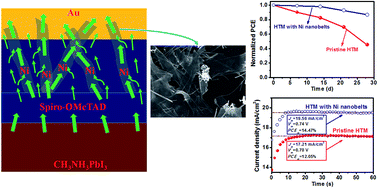
J. Mater. Chem. A, 2017,5, 4292-4299
https://doi.org/10.1039/C6TA10470C
Nanostructure-induced colored TiO2 array photoelectrodes with full solar spectrum harvesting
Wedge-shaped colored TiO2 nanoarrays grown on Ti foam have been synthesized with full solar spectrum harvesting.
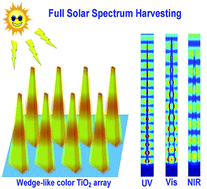
J. Mater. Chem. A, 2017,5, 3145-3151
https://doi.org/10.1039/C6TA10375H
Inspired by the “tip effect”: a novel structural design strategy for the cathode in advanced lithium–sulfur batteries
Inspired by the “tip effect”, hollow cupric oxide spheres can be used as an effective host for Li–S batteries.

J. Mater. Chem. A, 2017,5, 3140-3144
https://doi.org/10.1039/C6TA09322A
p-Type SnO thin layers on n-type SnS2 nanosheets with enriched surface defects and embedded charge transfer for lithium ion batteries
We constructed defective heterointerfaces of p-SnO on n-SnS2 nanosheets by plasma treatment to improve the anode performance in Li-ion batteries.
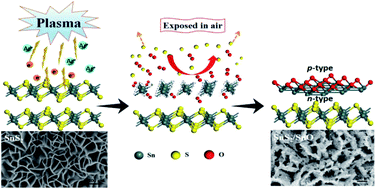
J. Mater. Chem. A, 2017,5, 512-518
https://doi.org/10.1039/C6TA09748K
Pyridinic nitrogen-rich carbon nanocapsules from a bioinspired polydopamine derivative for highly efficient electrocatalytic oxygen reduction
A novel bioinspired polydopamine derivative was prepared by self-polymerization of 6-(2-aminoethyl)-3-hydroxypyridin-2(1H)-one in an alkaline medium. It could be used as precursor to produce pyridinic N-rich carbon nanocapsules with a desired N doping content and superior electrocatalytic activity and stability for the ORR.
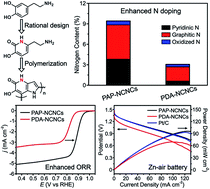
J. Mater. Chem. A, 2017,5, 519-523
https://doi.org/10.1039/C6TA09315A
Enhanced thermoelectric performance through synergy of resonance levels and valence band convergence via Q/In (Q = Mg, Ag, Bi) co-doping
Remarkably improved thermoelectric properties are achieved through the synergetic effects of the resonance levels, the valence band convergence, and the carrier concentration optimization by chemical doping.
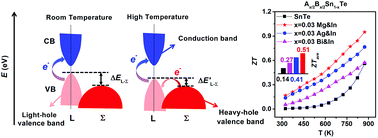
J. Mater. Chem. A, 2018,6, 2507-2516
https://doi.org/10.1039/C7TA09117F
Barium disilicide as a promising thin-film photovoltaic absorber: structural, electronic, and defect properties
We report on a barium disilicide (BaSi2) system as a potential absorber material for thin-film solar cells within the density functional theory framework by using advanced methods like GW and BSE and elucidate the first report on the molecular orbital diagram and defect physics in BaSi2.

J. Mater. Chem. A, 2017,5, 25293-25302
https://doi.org/10.1039/C7TA08312B
Salt-templated porous carbon–carbon composite electrodes for application in vanadium redox flow batteries
Investigation of a newly developed IL-derived composite electrode, synthesized via the salt templating method for utilization in vanadium redox flow batteries.

J. Mater. Chem. A, 2017,5, 25193-25199
https://doi.org/10.1039/C7TA07759A
A three-dimensional hierarchical structure of cyclized-PAN/Si/Ni for mechanically stable silicon anodes
We designed a three-dimensional hierarchical structure of cyclized-PAN/Si/Ni by the CVD method for mechanically stable silicon anodes.
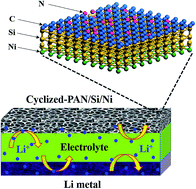
J. Mater. Chem. A, 2017,5, 24667-24676
https://doi.org/10.1039/C7TA08744F
Exceptionally high sodium-ion battery cathode capacity based on doped ammonium vanadium oxide and a full cell SIB prototype study
Sodium-ion battery technology, the existing electrodes, and electrolytes are still in the early stage of development, and more intense research is necessary before moving to mass production and application.
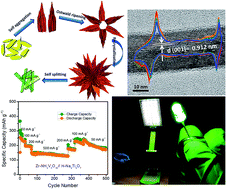
J. Mater. Chem. A, 2017,5, 24929-24941
https://doi.org/10.1039/C7TA08104A
Two-dimensional multilayer M2CO2 (M = Sc, Zr, Hf) as photocatalysts for hydrogen production from water splitting: a first principles study
Theoretical study on two-dimensional multilayered MXenes for hydrogen production from water splitting.

J. Mater. Chem. A, 2017,5, 24972-24980
https://doi.org/10.1039/C7TA08812D
Single parabolic band transport in p-type EuZn2Sb2 thermoelectrics
Thermoelectric transport properties of EuZn2Sb2 can be well understood by a SPB conduction and the κL-reduction leads to zT-enhancement.
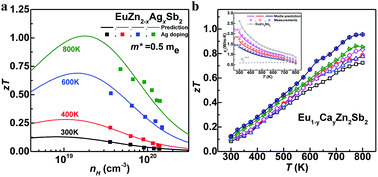
J. Mater. Chem. A, 2017,5, 24185-24192
https://doi.org/10.1039/C7TA08869H
A simple strategy toward hierarchically porous graphene/nitrogen-rich carbon foams for high-performance supercapacitors
We report a facile approach to prepare 3D hierarchically porous graphene/nitrogen-rich carbon foams via introducing graphene oxide nanosheets into commercial melamine foam. The assembled solid-state symmetric supercapacitors deliver considerably enhanced energy storage capability and excellent cycling stability.
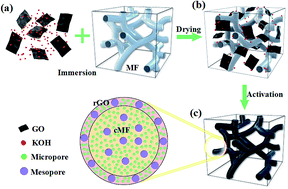
J. Mater. Chem. A, 2017,5, 24178-24184
https://doi.org/10.1039/C7TA09039K
Colloidal engineering for monolayer CH3NH3PbI3 films toward high performance perovskite solar cells
Colloidal engineering by controlling the size of colloidal clusters in the perovskite precursor was developed to induce monolayer CH3NH3PbI3 films.

J. Mater. Chem. A, 2017,5, 24168-24177
https://doi.org/10.1039/C7TA08761F
High-efficient electrocatalysts by unconventional acid-etching for overall water splitting
A novel method is described for production of a two-tiered hierarchical nickel hydroxide nanosheet via self-regulating acid-etching.
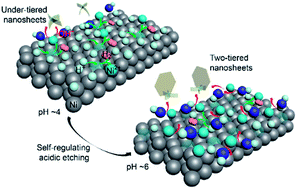
J. Mater. Chem. A, 2017,5, 24153-24158
https://doi.org/10.1039/C7TA08826D
Design of new photovoltaic systems based on two-dimensional group-IV monochalcogenides for high performance solar cells
A new photovoltaic system based on single layer group-IV monochalcogenides MX (M = Ge, Sn; X = S, Se) exhibits high performance.
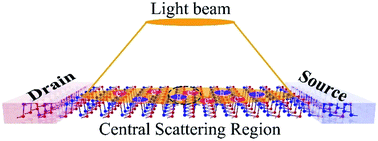
J. Mater. Chem. A, 2017,5, 24145-24152
https://doi.org/10.1039/C7TA08097B
Tailoring the chemistry of blend copolymers boosting the electrochemical performance of Si-based anodes for lithium ion batteries
Tailoring the chemistry of mixed polymers leading to excellent battery performance. A novel avenue with surface chemistry control of materials.
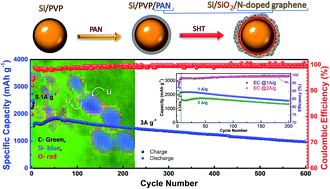
J. Mater. Chem. A, 2017,5, 24159-24167
https://doi.org/10.1039/C7TA08369F
Hollow ZnCdS dodecahedral cages for highly efficient visible-light-driven hydrogen generation
A novel approach, combining sulfurization and cation-exchange processes, is developed to fabricate hollow ZnCdS rhombic dodecahedral cages from ZIF-8, which exhibit superior catalytic activity and durability for hydrogen evolution from water splitting under cocatalyst-free and visible-light driven conditions.

J. Mater. Chem. A, 2017,5, 24116-24125
https://doi.org/10.1039/C7TA07587A
Highly conductive Na-embedded carbon nanowalls for hole-transport-material-free perovskite solar cells without metal electrodes
Highly conductive porous Na-embedded carbon nanowalls exhibit excellent counter electrode performance for HTM-free perovskite solar cells without metal electrodes.
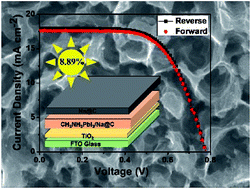
J. Mater. Chem. A, 2017,5, 24126-24130
https://doi.org/10.1039/C7TA07730K
Titanium alkylphosphate functionalised mesoporous silica for enhanced uptake of rare-earth ions
Solid-phase adsorbents for rare-earth ions are prepared by covalently binding organophosphate ligands on mesoporous silica via a versatile metal(IV)–O–P linkage.
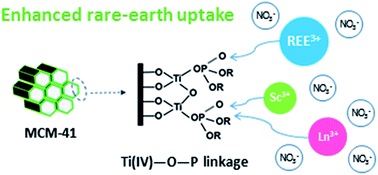
J. Mater. Chem. A, 2017,5, 23805-23814
https://doi.org/10.1039/C7TA08127H
Characterization of Cu2SnS3 polymorphism and its impact on optoelectronic properties
Temperature induced Cu2SnS3 phase transition from a defective cubic to a monoclinic structure assessed by Raman spectroscopy and leading to higher photovoltaic efficiency.

J. Mater. Chem. A, 2017,5, 23863-23871
https://doi.org/10.1039/C7TA08705E
Unconventional mesoporous single crystalline NiO by synergistically controlled evaporation and hydrolysis
Mesoporous single-crystal NiO was synthesized by controlling metal ion hydrolysis and solvent evaporation rates, exhibiting excellent electrochemical activities.
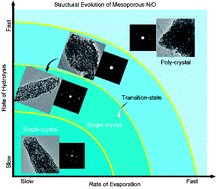
J. Mater. Chem. A, 2017,5, 23840-23843
https://doi.org/10.1039/C7TA08155C
Resolving the degradation pathways of the O3-type layered oxide cathode surface through the nano-scale aluminum oxide coating for high-energy density sodium-ion batteries
Nano-scale Al2O3 coating was effective at resolving the degradation pathways of the cathode surface in sodium-ion batteries.
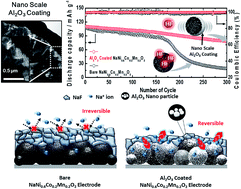
J. Mater. Chem. A, 2017,5, 23671-23680
https://doi.org/10.1039/C7TA08443A
Coordination chemistry with 1-methyl-5H-tetrazole: cocrystallization, laser-ignition, lead-free primary explosives – one ligand, three goals
Numerous energetic coordination complexes (MnII, FeII, CoII, NiII, CuII, ZnII, and AgI) using 1-methyl-tetrazole as the ligand were synthesized and tuned by different counteranions (e.g. NO3−, ClO4−, picrate, and styphnate). They show great potential for mechanical or optical initiation systems.
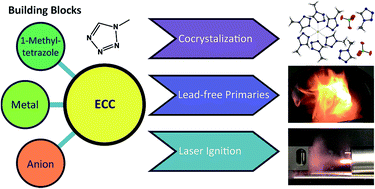
J. Mater. Chem. A, 2017,5, 23753-23765
https://doi.org/10.1039/C7TA07780G
Simultaneous polymerization enabled the facile fabrication of S-doped carbons with tunable mesoporosity for high-capacitance supercapacitors
Simultaneous polymerization enabled the facile fabrication of S-doped mesoporous carbon materials as advanced electrodes for high-capacitance supercapacitors.

J. Mater. Chem. A, 2017,5, 23513-23522
https://doi.org/10.1039/C7TA08663F
Full-spectrum-activated Z-scheme photocatalysts based on NaYF4:Yb3+/Er3+, TiO2 and Ag6Si2O7
A Z-scheme full-spectrum-activated upconversion heterostructural photocatalyst was designed and synthesized, which exhibited superior photocatalytic activity than commercial P25 by 15 fold.
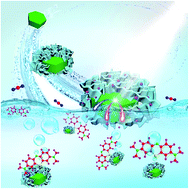
J. Mater. Chem. A, 2017,5, 23566-23576
https://doi.org/10.1039/C7TA07529D
Large-scale fabrication of translucent, stretchable and durable superhydrophobic composite films
Transplantable superhydrophobic films with comprehensive performance in translucence, thermal tolerance, stretchability, impact resistance, wear resistance, anti-corrosion, and self-cleaning.
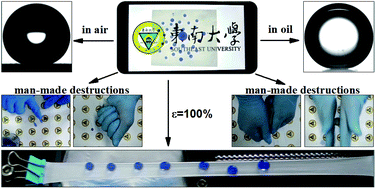
J. Mater. Chem. A, 2017,5, 23489-23496
https://doi.org/10.1039/C7TA08203G
In situ preparation of a macro-chamber for S conversion reactions in lithium–sulfur batteries
A macro-chamber for sulfur-conversion reactions for lithium–sulfur batteries was created using the in situ growth of a TiN/reduced graphene oxide multifunctional cover layer. The chamber significantly increased the utilization of sulfur and the cycling stability of lithium–sulfur batteries.
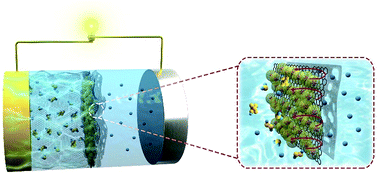
J. Mater. Chem. A, 2017,5, 23497-23505
https://doi.org/10.1039/C7TA08309B
About this collection
This on-going web collection features all the articles published inJournal of Materials Chemistry A in 2017 marked as HOT, as recommended by referees. Congratulations to all the authors whose articles are featured!